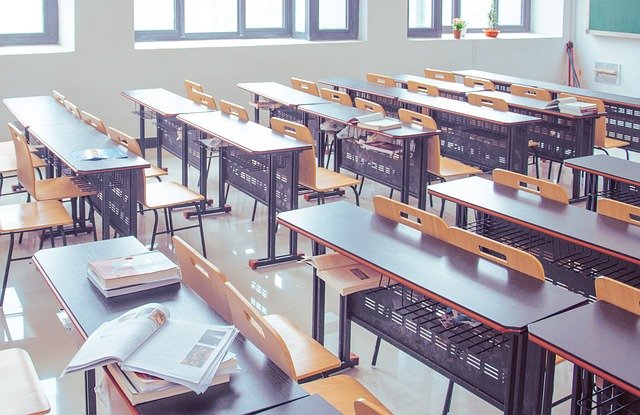Bill Oberndorf has committed his resources to expanding opportunities for children from disadvantaged backgrounds. He chairs the American Federation for Children, which funds scholarships for low-income students to attend private schools and supports pro-school-choice political candidates at the state level. In 2021, Oberndorf was named the Simon-DeVos Philanthropist of the Year by the Philanthropy Roundtable, a national association of philanthropists. Education Next senior editor Paul Peterson recently spoke with Oberndorf about the state of school choice in America.
Paul Peterson: Why did you de-cide to focus much of your philanthropy on helping disadvantaged children attend private school?

Bill Oberndorf: I felt extremely fortunate that I was able to attend a wonderful private school in Cleveland, and only because my grandparents set aside and saved money for the education of my brothers and me. I felt that every kid who wants to work hard in school, whose parents want something better for them, should have access to the kind of education that best fits the needs of that child. I feel that this is the civil-rights issue of our time.
The idea of private-school choice through government-funded vouchers was proposed by Milton Friedman in the 1950s. Seventy years later, we have only a few such programs in this country. Why has it been so difficult to build public support for this idea?
I remember talking to Milton Friedman about this shortly before he died. He said, “Well, we’re just about right on schedule. It takes decades for ideas to take root before they really can flourish.” So Milton was not deterred. The opposition has come from the teachers unions, which are such a powerful force and funding source for the Democratic Party that this has created major obstacles along the way.
But the good news is that now there are private-school choice programs in 22 states. And 45 states plus D.C. have charter-school programs.
Yes, but in recent years it seemed like progress was stalling out. In 2016 in Massachusetts, for example, a ballot initiative to expand charter schools was defeated, even though charter schools in Massachusetts seemed to be doing very well. There were also divisions within the school-choice movement, and the energy seemed to be disappearing. How were you assessing the state of school choice at that time?
The charter-school movement had scaled up to around 3 million students enrolled, and suddenly, for the first time, that sector was feeling the kind of union opposition that the private-school choice movement had felt all along. This did create a lull, but since then, some important things have happened that have helped change the overall trajectory of the advocacy and implementation of private-school and charter-school choice.
What’s happened, of course, is the Covid-19 pandemic, and the shutting down of district schools across the country, with private schools remaining open in many places. Do you think that’s critical to what seems to be a turning of public opinion today?
Yes. The tide went out because of Covid, and many people who never had been touched by the impact of union power suddenly felt that impact. The other factor was that because so much remote instruction was going on, parents actually saw for the first time the quality of the teaching in their kids’ classrooms, and they didn’t like what they saw. This was a real eye-opener, and it has caused the acceptance and popularity of education choice to skyrocket.
Over the last school year, a lot of people moved away from the standard district-run school, either to the private sector, to charter schools, or to homeschooling, which has exploded. Is this people voting with their feet against what was happening during the pandemic?
Absolutely. And at the American Federation for Children, which is now the largest school-choice organization in the country, we start with funding state legislative races and directly backing candidates. You referenced the ballot initiative losing in Massachusetts. There has never been a ballot initiative that’s passed, because it’s too easy to knock them off. Instead, we look at states where we feel that, over a three- to five-year period, we can change the legislative composition to be favorable to choice and where we can help elect a governor who is receptive to signing such legislation.
In 2020 we backed 390 state legislators and won 337 of those seats, concentrated in 13 states. And what resulted in 2021 was the passage of legislation funding 150,000 new private-school seats, at about $6,000 dollars apiece—almost $900 million of government money. And, as you mentioned, there were also increases in homeschooling and in charter enrollment. This shift is having a big political influence too, in how people vote once they see how their children are benefiting from these programs.
What do you see as the main driver here?
I think it’s the culmination of a lot of frustration that parents have had over the years—and particularly the kind of parents we try to help, low-income parents, and this is changing how they are voting.
Governor Doug Ducey from Arizona told me he got 44 percent of the Hispanic vote the last time he ran. He said, “That’s only because of this issue of school choice. That’s the only reason I got that kind of percentage.” And when Ron DeSantis’s opponent, Tallahassee mayor Andrew Gillum, said, “We’re going to end the school-choice programs in Florida,” DeSantis ended up getting 18 percent of the Black female vote in the gubernatorial election. That was 70,000 votes, and he won by 30,000 votes. So this is changing outcomes, with people who are simply tired of seeing what’s happening to their children, who are subject to sending their kids to schools that none of us would ever let our kids go to.
Are political leaders talking to one another from state to state? Is this what’s moving the conversation?
Yes, I think school choice is finally gaining traction in a way we’ve never seen before. And in this next election cycle, the federation will have 550 different state legislative races to invest in if we are able to raise the funds to do so. Governors understand the implications of school choice, and politicians of color are understanding it is good for their constituents. So we don’t view this as a Republican issue or a Democratic issue. About 20 percent of the money we give to candidates every year goes to Democrats. We’d like it to be a lot higher than that.
And I think that, with what happened in the wake of George Floyd’s murder and the riots in the summer of 2020, you cannot have a real conversation about systemic racism if you do not talk about K–12 and the outcomes for these kids. It is what’s holding back students of color in this country. It’s an inconvenient truth. If we do not talk about this, I don’t think we will be able to make substantial progress moving forward.
This is an edited excerpt from an Education Exchange podcast, which can be heard at educationnext.org.
The post “This Is the Civil-Rights Issue of Our Time” appeared first on Education Next.
By: Education Next
Title: “This Is the Civil-Rights Issue of Our Time”
Sourced From: www.educationnext.org/this-is-the-civil-rights-issue-of-our-time-philanthropist-bill-oberndorf/
Published Date: Wed, 26 Jan 2022 10:00:13 +0000
News…. browse around here
